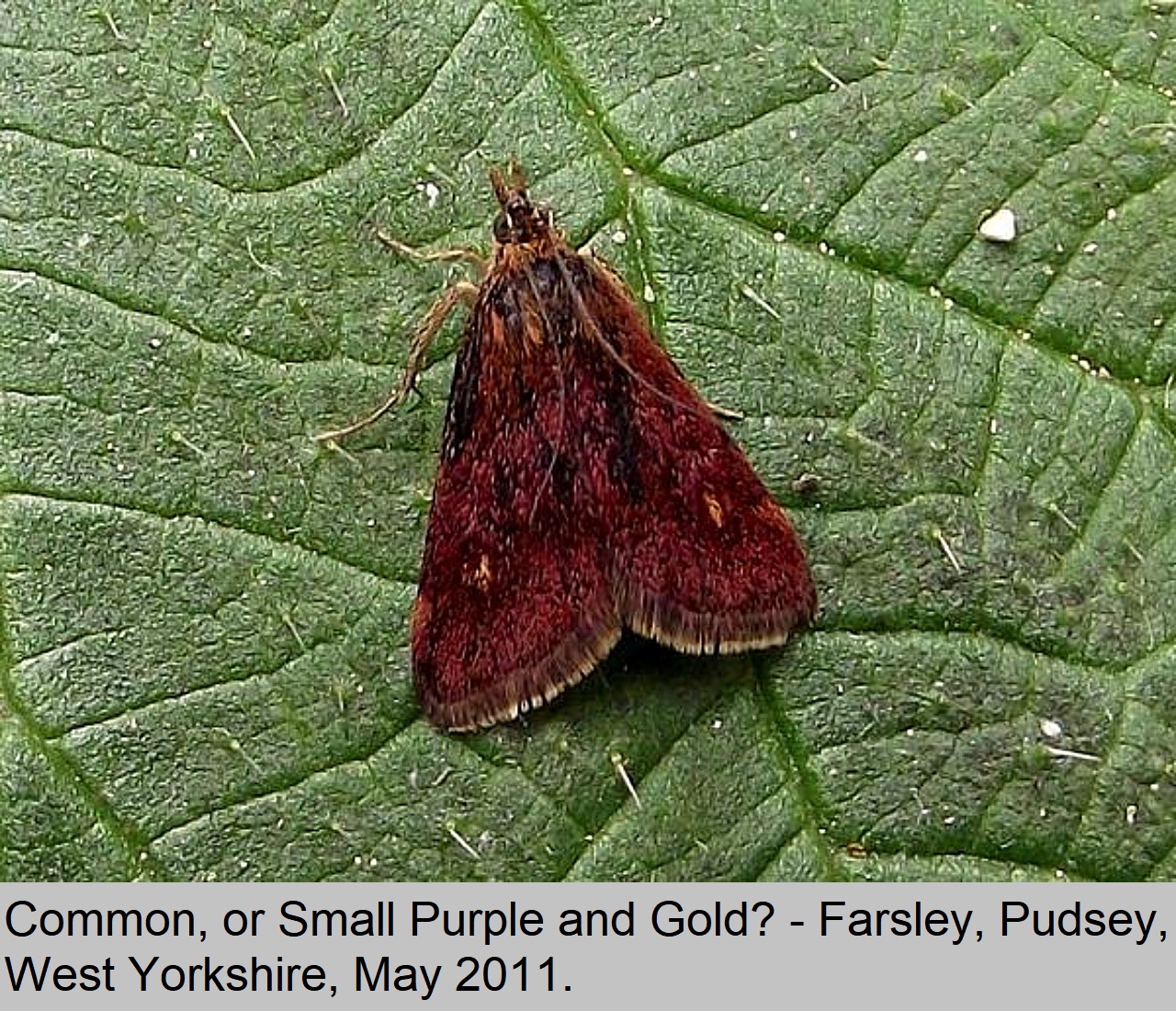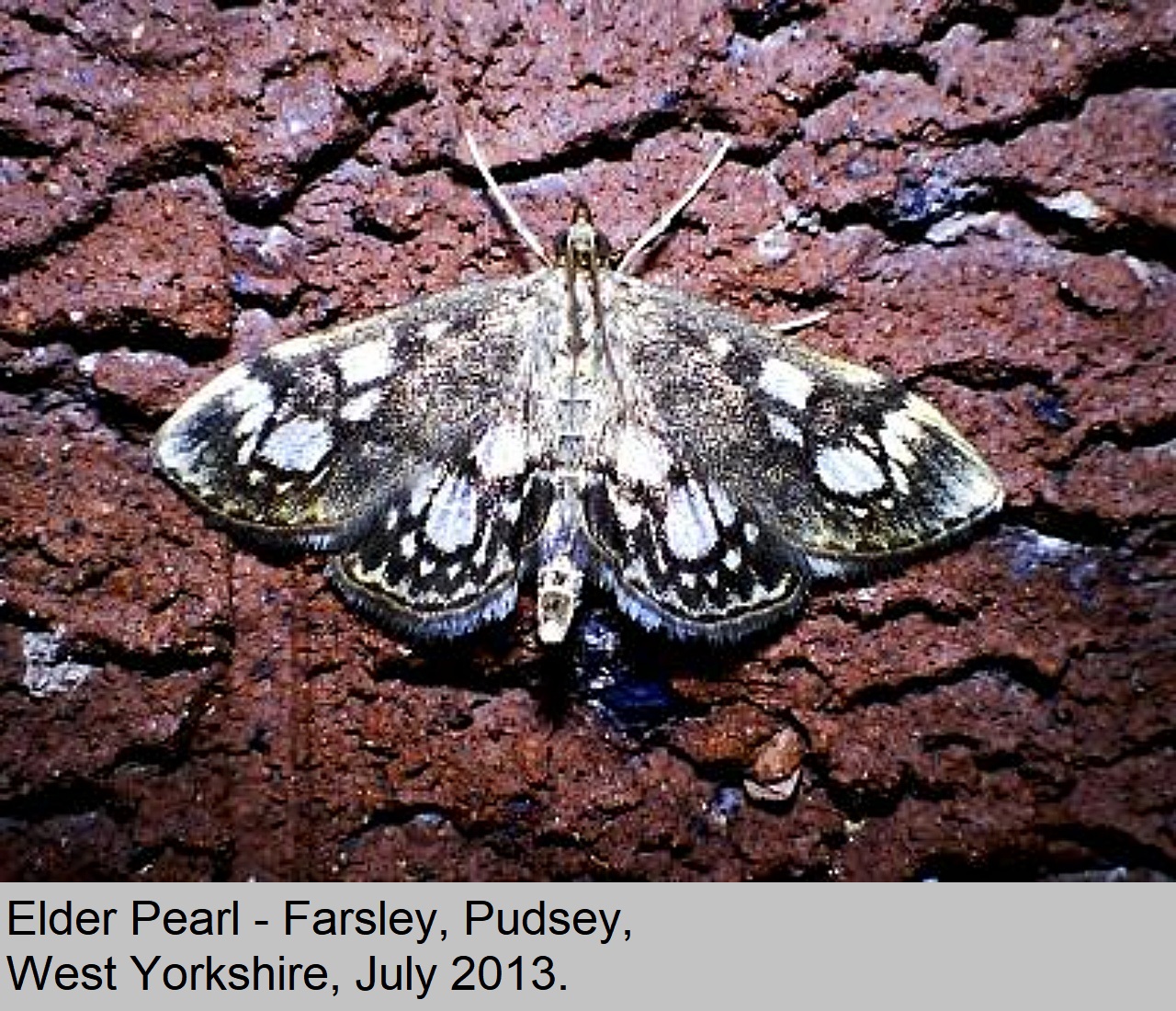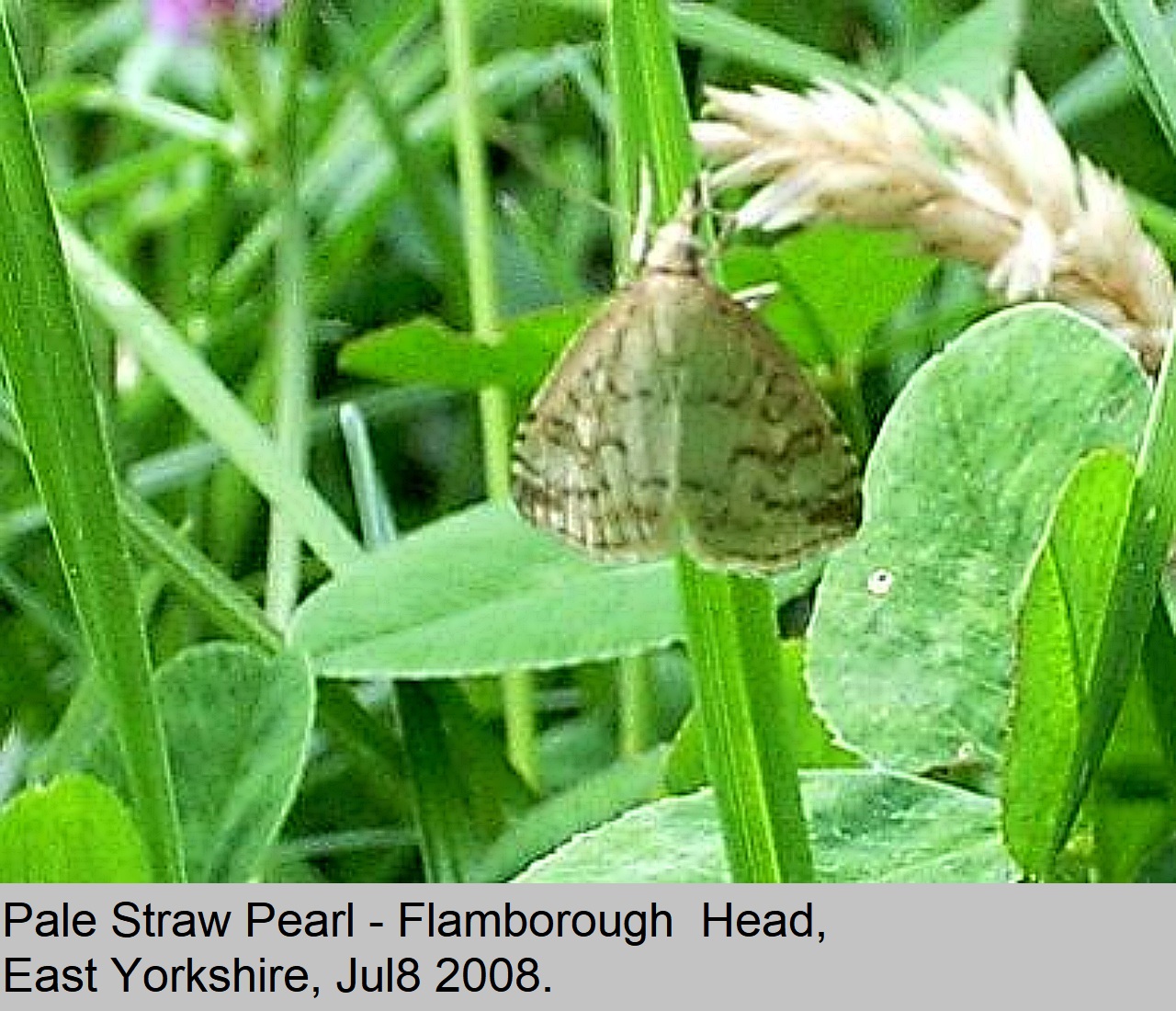|
|
||||||
|
|
|
|||||
| (Scopoli 1763) | (Scopoli 1763) | (Linnaeus 1758) | (Linnaeus 1758) | (Scopoli 1763) |
| Crambidae - Pyraustinae | Crambidae - Pyraustinae | Crambidae - Pyraustinae | Crambidae - Pyraustinae | Crambidae - Pyraustinae |
| Small Purple and Gold? | Small Purple and Gold? | Common Purple and Gold? | Common Purple and Gold? | Small Purple and Gold? |
| Pyrausta aurata | Pyrausta aurata | Pyrausta purpuralis | Pyrausta purpuralis | Pyrausta aurata |
| 63.006/007 BF 1361 | 63.006/007 BF 1361 | 63.006/007 BF 1361 | 63.006/007 BF 1361 | 63.006/007 BF 1361 |
|
Two almost identical moths!
The Common Purple and Gold, and the Small Purple and Gold are almost identical. In fact to be certain which species is which, examination of the genitalia is required. They both hang around patches of mint , the food plant of the caterpillar. Hence their other common name 'The Mint Moth'. |
 |
 |
 |
Status: Resident in UK Wing Span: 17 to 19mm and 19 to 21mm. Flight Period: May and June, again in July August. Habitat: Both moths like chalk downs, also found near water mint and found in gardens where it feeds mainly on Cat Mint. Comment: Pyrausta has a patchy distribution in England, Wales and southern Scotland, Inner Hebrides. |
| (Hufnagel 1767) | (Hufnagel 1767) | (Hufnagel 1767) | (Linnaeus 1758) | (Linnaeus 1758) |
| Crambidae - Pyraustinae | Crambidae - Pyraustinae | Crambidae - Pyraustinae | Crambidae - Pyraustinae | Crambidae - Pyraustinae |
| Elder Pearl | Elder Pearl | Elder Pearl | Small Magpie | Small Magpie |
| Anania coronata | Anania coronata | Anania coronata | Eurrhypara hortulata | Eurrhypara hortulata |
| 63.018 BF 1378 | 63.018 BF 1378 | 63.018 BF 1378 | 63.025 BF 1376 | 63.025 BF 1376 |
 |
 |
Status: Resident in UK Wing Span: 22,mm to 26mm. Flight Period: June and July. Habitat: Habitats are hedgerows, gardens, wood land rides and fringes, river banks, commons, heaths, road side verges and many other places where Elder grows. Comment: This moth is a quite common resident in England, Wales and Ireland, from around south of Cumbria and Yorkshire. |
 |
Status: Resident in UK Wing Span: 24mm to 28mm. Flight Period: June and July. Habitat: Most places where the larval food plant, Stinging Nettles grow. Comment: This moth is an abundant resident to England, Wales and Ireland. It becomes less common and more localised in northern England, south Scotland. |
| (Hubner 1796) | (Hubner 1796) | (Hubner 1809) | (Hubner 1809) | (Hubner 1809) |
| Crambidae - Pyraustinae | Crambidae - Pyraustinae | Crambidae - Pyraustinae | Crambidae - Pyraustinae | Crambidae - Pyraustinae |
| Rusty Dot Pearl | Rusty Dot Pearl | Pale Straw Pearl | Pale Straw Pearl | Pale Straw Pearl |
| Udea ferrugalis | Udea ferrugalis | Udea lutealis | Udea lutealis | Udea lutealis |
| 63.031 BF 1395 | 63.031 BF 1395 | 63.033 BF 1388 | 63.033 BF 1388 | 63.033 BF 1388 |
 |
Status: Migrant to the UK Wing Span: 21mm to 23mm. Flight Period: Spring through to Autumn. Habitat: Habitats are very variable due to the large variety of food plants consumed by the larvae, and are mainly coastal. Comment: This moth can appear at almost any time of the year. It can be quite common in south Britain some years, getting scarcer further north. |
 |
 |
Status: Resident in UK Wing Span: 23mm to 26mm. Flight Period: July and August. Habitat: Habitats are most open places where food plants, including Knapweed and Bramble grow. Waste ground, roadside verges pastures, hedgerows, commons. Comment: This moth is an abundant resident to most parts of the British Isles. |
| (Denis & Schiffermuller 1775) | (Denis & Schiffermuller 1775) | |||
| Crambidae - Pyraustinae | Crambidae - Pyraustinae |
|
||
| Dusky Pearl | Dusky Pearl |
|
||
| Udea prunalis | Udea prunalis | |||
| 63.034 BF 1390 | 63.034 BF 1390 | |||
 |
Status: Resident in UK Wing Span: 20mm to 24mm. Flight Period: June and July. Habitat: Habitats are a wide variety of shrubby places, including gardens parks, and hedgerows. Usually where Blackthorn is present, although they actually feed on a wide variety of herbaceous plants. Comment: This moth is common and wide spread over most of the British Isles. |
Spare slot for expansion |
Spare slot for expansion |
Species 63.052 to 63.075 continued on the next page |
|
Contact Website Manager dave.hatton29@btinternet.com |
Web Designer Dave Hatton |
Dave Hatton reserves the copyright on all images. © 2022 |
||||||